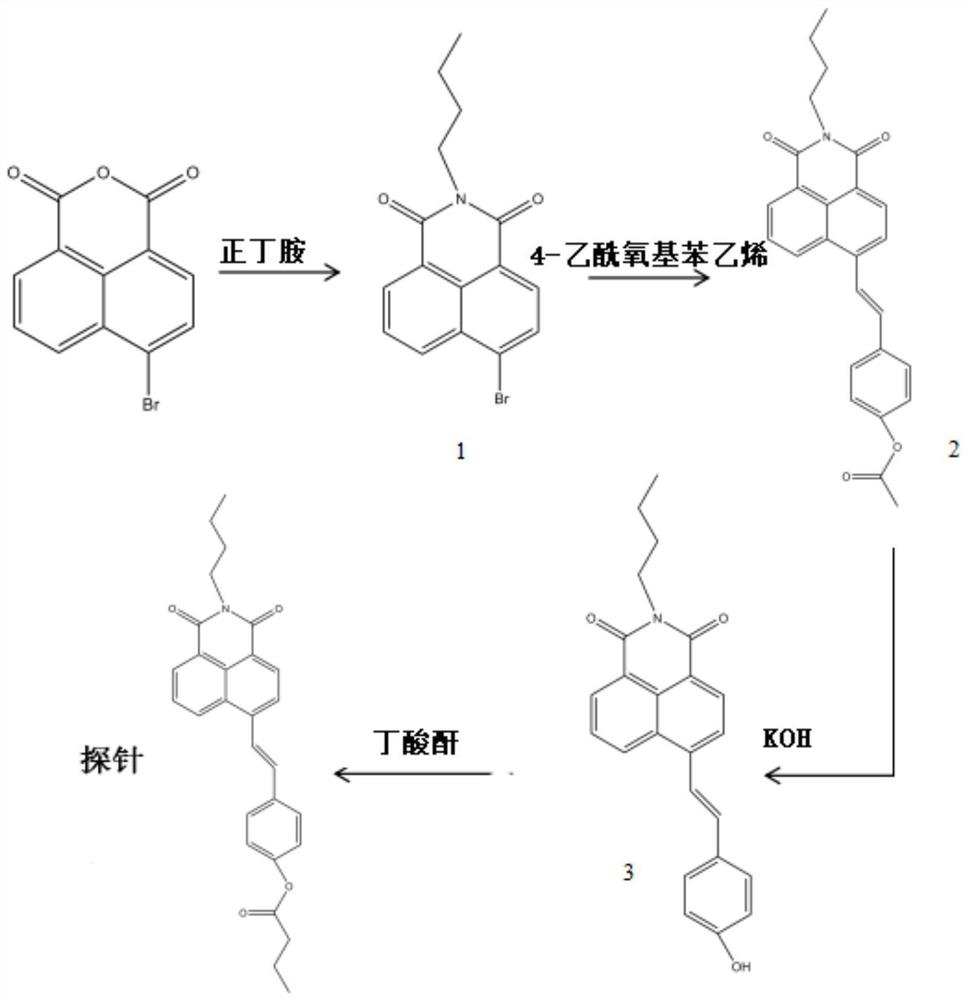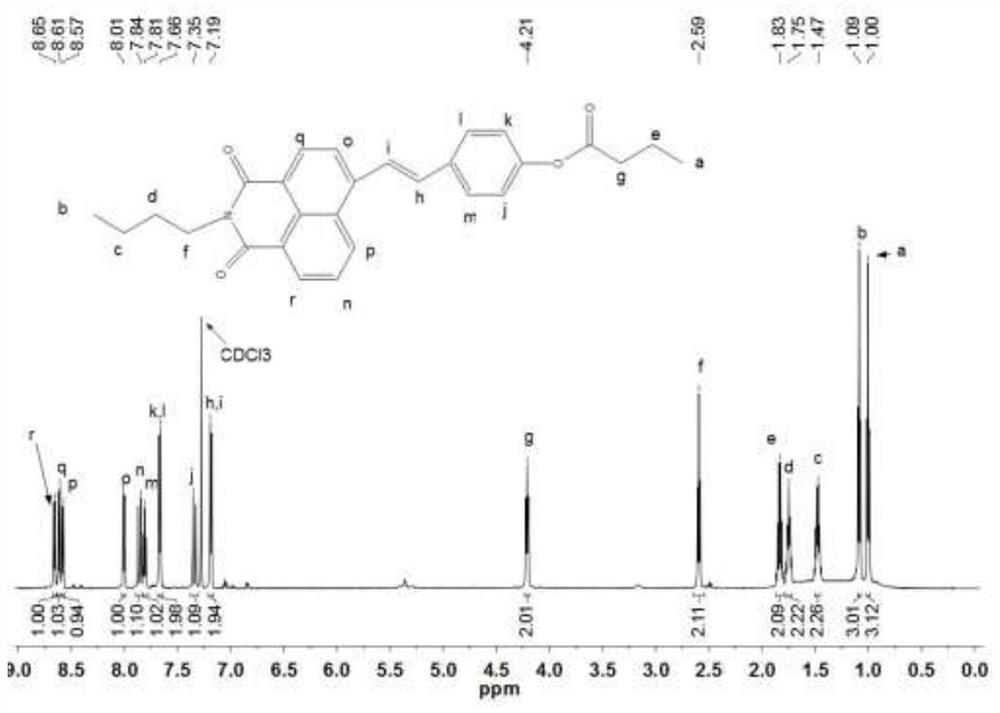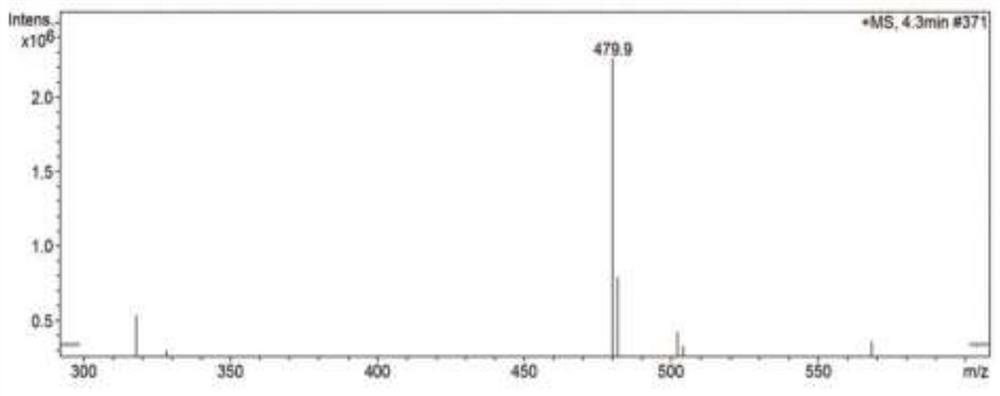A fluorescent probe that can be used to detect cutinase on the surface of plant leaves and its preparation method
A technology of fluorescent probes and plant leaves, which is applied in the field of analysis and testing, can solve the problems of high requirements for operation methods and cumbersome steps, and achieve the effects of improving detection efficiency, simple operation, and convenient results
- Summary
- Abstract
- Description
- Claims
- Application Information
AI Technical Summary
Problems solved by technology
Method used
Image
Examples
Embodiment 1
[0045] An embodiment of the fluorescent probe of the present invention and its preparation method, the fluorescent probe of this embodiment is N-n-butyl-4-(4-butyryloxystyryl)-1,8-naphthalene Diimide, its structural formula is as shown in (I):
[0046]
[0047] The synthetic route of this embodiment is as figure 1 Shown, its specific preparation method is as follows:
[0048] 1) Dissolve the reaction raw material 4-bromo-1,8-naphthalene diimide (0.5g, 1.8mmol) in 5ml ethanol and put it into a 25ml two-necked bottle and put a stirring bar in it, then place the two-necked bottle Stir on a magnetic stirrer for 15 minutes. After it is completely dissolved, use a pipette gun (100-1000μl) to accurately measure 0.36ml of n-butylamine (0.36ml, 3.6mmol) into the two-necked bottle, and then assemble the serpentine return tube into the On the two-necked bottle, and nitrogen protection was introduced through the other port of the two-necked bottle, and then the crystallization dish c...
Embodiment 2
[0052] The anti-moisture interference of embodiment 2 fluorescent probe
[0053] Add 10%, 20%, 40%, 60%, 70%, 80%, and 90% of the water in the system to N-n-butyl-4-(4-butyryloxystyryl)-1,8- The ability of anti-moisture interference in the detection process of the probe was observed in the ethanol solution of naphthalene diimide. The result is as Figure 4 As shown, the probe can complete the normal detection of cutinase when the environmental moisture content is less than 80%, and has high practical application potential.
Embodiment 3
[0054] Example 3 Ratiometric detection of cutinase in the environment by N-n-butyl-4-(4-butyryloxystyryl)-1,8-naphthalene diimide.
[0055] The fluorescent probe N-n-butyl-4-(4-butyryloxystyryl)-1,8-naphthalene diimide prepared in Example 1 is used for ratiometric detection of cutinase in the environment . Use a probe solution with a concentration of 4 μM during the test, add a fixed concentration of cutinase (70U / L) to the probe solution, record the fluorescence intensity of the solution at 520nm and 580nm after reacting for different times, and calculate based on this The detection ratio I580 / I520 is obtained to achieve the purpose of ratio detection. Such as Figure 5 As shown, the lines 1-8 in the figure represent the fluorescence images when the reaction time between the probe solution and cutinase is 0 min, 5 min, 10 min, 15 min, 20 min, 25 min, 30 min, 35 min, and 40 min, respectively. It can be seen from the figure that the fluorescence emission position of the prob...
PUM
 Login to View More
Login to View More Abstract
Description
Claims
Application Information
 Login to View More
Login to View More - R&D Engineer
- R&D Manager
- IP Professional
- Industry Leading Data Capabilities
- Powerful AI technology
- Patent DNA Extraction
Browse by: Latest US Patents, China's latest patents, Technical Efficacy Thesaurus, Application Domain, Technology Topic, Popular Technical Reports.
© 2024 PatSnap. All rights reserved.Legal|Privacy policy|Modern Slavery Act Transparency Statement|Sitemap|About US| Contact US: help@patsnap.com










